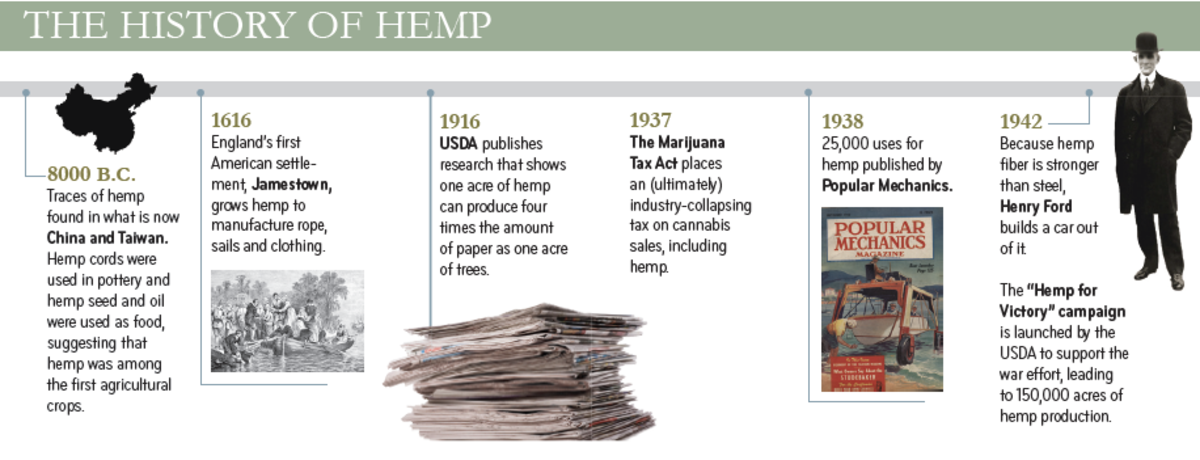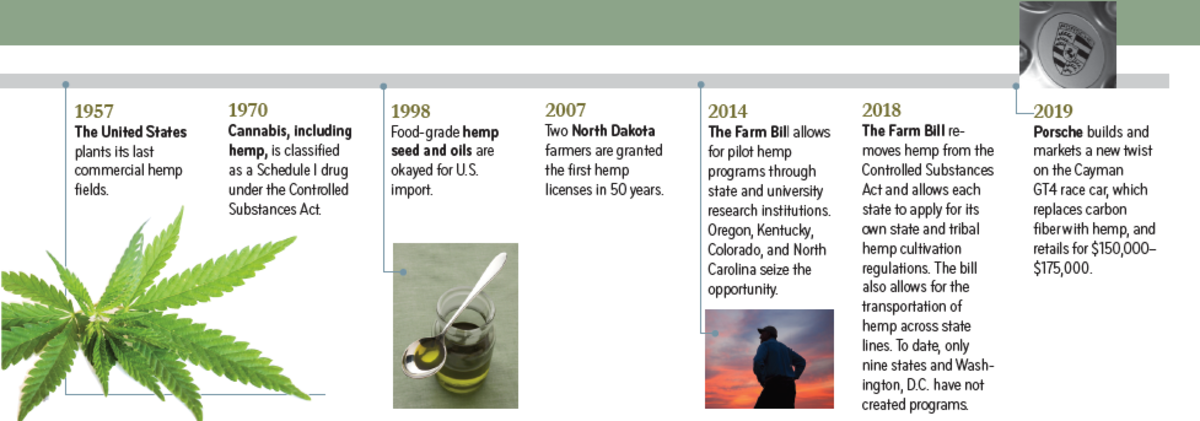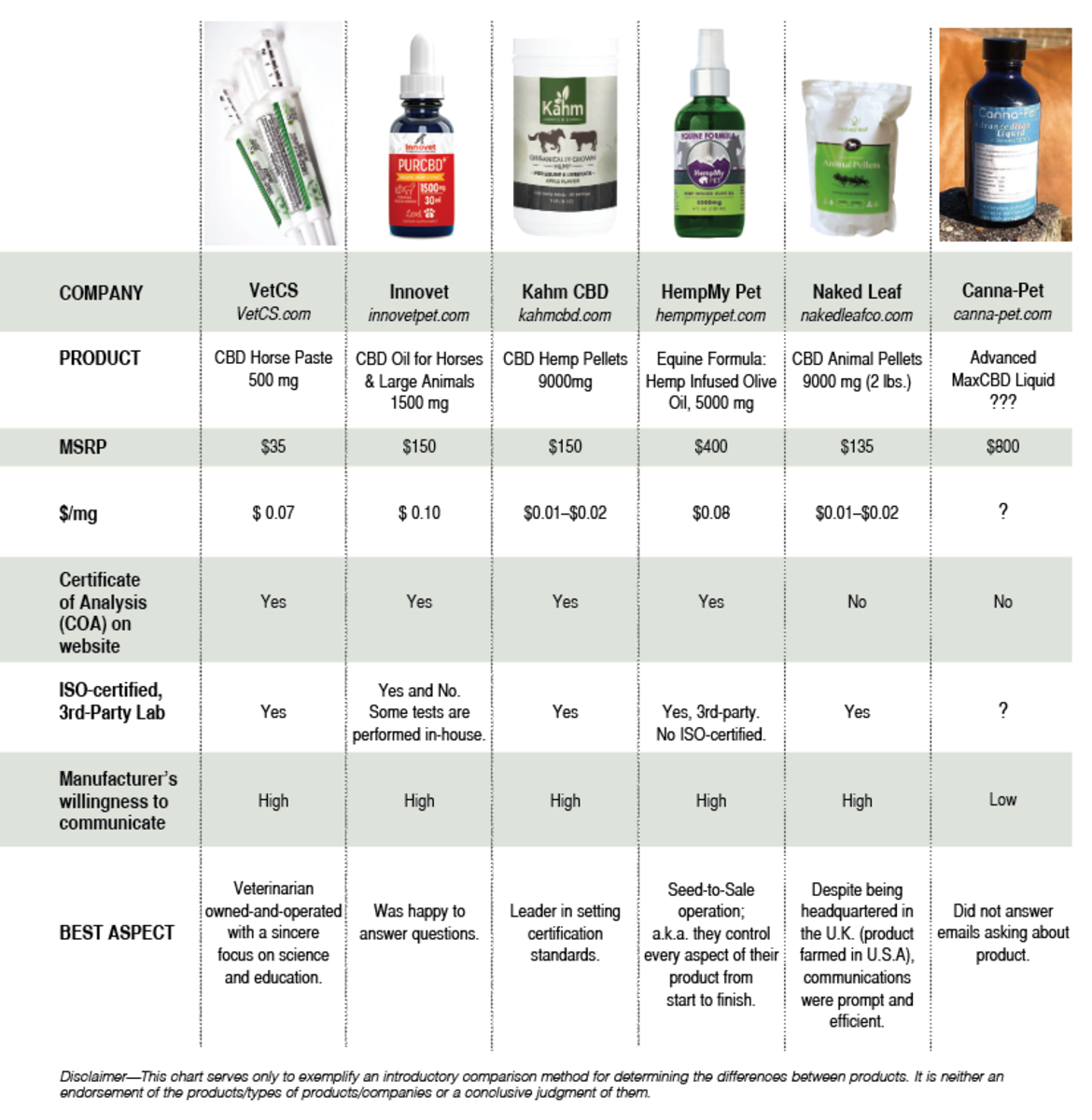On December 20, 2018, the federal government put its signature on the 2018 Farm Bill, thereby legalizing hemp in the United States. Sort of.
The ins and outs of the new, legal hemp industry are more contorted than a rope with a bad backswing and a twisted honda, but that hasn’t prohibited a rapid emergence of countless new products for humans and horses alike. Particularly in cannabis-friendly states and across social media, CBD is being promoted as what can look like an end-all-be-all, magical, cure-all elixir, and the answer to everything from headaches to cancer and to horses whose aches and anxieties just might be the death of them.
But, what is CBD really? Or, for that matter, what is cannabis and what is hemp? Can we get high from it? Is it toxic to our animals? How should we use it? And, finally, which products can we trust?
Back to Basics
Hemp has a fascinating history that begins as one of the world’s first agricultural crops. Without going on too much of a deep dive, a few hemp history highlights include its use on our battleships from the time of colonial Jamestown through WWII; Henry Ford building a car out of hemp in 1942, the same year the U.S. government launched its “Hemp for Victory” campaign that urged farmers to grow the crop for the war effort; and, just this year, Porsche revisiting Ford’s endeavor with its $175,000 race car that has replaced the carbon fiber with hemp.

So, if hemp’s so industrious (some sources say it has more than 50,000 uses), why are we just hearing about it? Short answer: Politics (a topic we won’t be covering here). Second short answer: Misinformation and murky definitions that persist even today.
Hemp ran into trouble with the 1937 Marijuana Tax Act, which placed a collapse-inducing tax on all cannabis sales. Both marijuana and hemp come from cannabis sativa, though there are different types of cannabis that marijuana can come from. All hemp, which is often referred to as a cousin of marijuana, however, comes only from cannabis sativa. So, since 1937, hemp and marijuana have been lumped together under the cannabis umbrella.
Marijuana is potent in THC (tetrahydrocannabinol)—the psychoactive component from which people get high. Hemp, on the other hand, produces an abundance of CBD (cannabidiol), which cannot get you high. Both plants can produce both THC and CBD, but for the plant to be defined legally as hemp (and therefore legal according the 2018 Farm Bill), it has to contain less than 0.3% of THC.
This small amount is what’s referred to as a “trace amount.” It cannot get you high, but it will be evident in a blood sample. For young ropers, in particular, who may be playing sports for high school or college, for instance, this is an important detail because there is no one policy that covers each of the different organizations, and any evidence of THC in the bloodstream can carry very real consequences for an athlete.
Similarly, for those whose horses compete in various arenas governed by different associations, it is worth reaching out to each of those associations for official language regarding this detail. Professional team ropers should know that “the use of CBD Oil on all horses and livestock used for contest purposes is prohibited by the PRCA at all sanctioned rodeos and will remain prohibited until further research becomes available.” The official statement from the organization goes on to clarify that “any use of CBD sponsor patches is prohibited at all PRCA-sanctioned rodeos.”
Of course, the U.S. hemp industry is estimated to be a $1.4-billion market this year, and it would be prudent to expect that regulations at all levels of government (from sporting leagues and associations to state governments and federal policy) may be seemingly fluid for the next few years.
Not to mention, even though the federal government signed off on U.S. hemp cultivation, what it actually did was invite the states to participate in a legal, federal hemp program. At press time, there were nine states (and Washington, D.C.) not participating in the program and which, therefore, still consider hemp to be illegal. As a result, folks crossing state lines often don’t realize that the rules and regulations are so wildly inconsistent and very much in their infancy.

The Science of It
2019 marks the 180 anniversary of a published study on the medicinal use of cannabis in 1839. The knowledge didn’t disappear—as evidenced by New Mexico’s 1978 Controlled Substance Therapeutic Research Act—but it was largely ignored—as evidenced by the breakthrough research conducted by Dr. Raphael Mechoulam in 1980 no one knows about in which seven-out-of-eight epileptic patients saw transformative results from their CBD treatments.
Research then focused on understanding how cannabis interacted with the body. By 1995, it was discovered that mammals, including humans, are equipped with an Endocannabinoid System (ECS), which regulates bodily functions including pain, sleep and appetite, for example. The ECS creates cannabinoids and has receptors throughout the body—in the skin, the brain, the nervous system, the bone, etc. Uniquely, the cannabis plant also produces cannabinoids (CBD and THC being the best known of the 113 known cannabinoids), which fit into the ECS receptors like a key in a lock. Therefore, if there is an imbalance or deficiency in the ECS, it may be beneficial to supplement the system with cannabinoids like CBD from hemp.
Despite the long history cannabis has in the research lab, in truth, coming by legitimate, scientific research has been an upward battle because of its federal classification as a Schedule I drug. With the legal separation of hemp from its cannabis cousin, however, that is changing, and many veterinarians are eager to see what the plant can offer their four-legged patients, pending more peer-reviewed research.
Until then, there is no short supply of anecdotal claims about what CBD can and has done for ourselves and our animals. Often, an owner seeking results for one ailment will notice a positive change in another aspect of their animal’s health and will become an advocate for the product, making claims of “wonder-drug” status. The hype generally lends itself to two reactions: One of enthusiasm with an elevated expectation of a product’s abilities, and one of skepticism, no thanks to the endless marketing we encounter daily.
In reality, CBD products do have the potential to support multiple maladies because of the nature of the ECS, but it is important to remember that no two animals possess the same ECS, meaning each will have its own unique experience with the product. Also, though largely not yet proven in animals (perhaps with the exception of rats and mice), studies abound that document the efficacy of CBD in the management of inflammation, seizures and anxiety, and demonstrate that it can be effective in treating chronic pain.
HempMy Pet, of Colorado, for instance, is on the verge of publishing the positive results of their study with Colorado State University College of Veterinary Medicine and the Downing Center for Pain Management on the efficacy of their canine product in the treatment of dogs with chronic pain. CSU and Cornell universities have already published other independent canine CBD findings, too, but for the time being, equine-focused research is solely the result of companies like HempMy Pet with equine CBD products driving the demand for science. Kahm CBD—a Nevada-based company—has reportedly commenced researching the impact of its pellets on horses with severe arthritis and navicular and anticipates the results will be published by their partner university at the end of the summer. Similarly, Colorado’s VetCS has been testing bloodwork at another university lab to determine the half-life of CBD in horses.

“Half-life is the peak of the most effective window,” explained Trish Wilhelm, CVT, a certified veterinary cannabis counselor who co-owns VetCS with Dr. Chelsea Luedke, DVM. “Right now, it is papered and peer-reviewed that dogs have a four-hour half-life of CBD proven in their systems, so, the first four hours is when it’s the most effective, but it stays in the system the full eight hours. With horses, however, we’re finding in our own studies that horses are actually double that. Their half-life is actually around eight hours. That’s why, for horses, we, as a company, only feel the need to dose once a day.”
Best Practices
Dosing can cause a bit of confusion for a horse owner. Recommended amounts vary according to companies, as do intervals. The reason for this, again, is because there aren’t any official, peer-reviewed studies to lean on. For this reason, Wilhelm recommends the motto, “Low and Slow.” Begin with a low dose and increase the dose slowly until you are able to recognize improvements. Give your horse up to 48 hours before deciding the amount you’ve dosed was negligible.
With that advice, however, also comes the assertion that owners should absolutely consult their veterinarians to design a whole-systems treatment plan. Vets know from treating dogs that CBD can interact with drugs the dog is already on.
“We do know, specifically, that CBD is metabolized through the P450 enzymes in the liver,” Wilhelm said. “So any concurrent medications these animals are on that might be metabolized through the liver, it has the potential to actually accentuate that circulation of the other drug through the system and heighten that experience.”
To add to what you need to know, different types of products may be more effective in attaining different goals. Without making things overwhelmingly complicated, hemp-derived CBD products are available to your horse in different formulations in tinctures, pastes, pellets and powders. Pastes and tinctures, for instance, can offer the convenience of being able to dose anywhere, anytime, and may be more suitable for treating time-sensitive issues (think, for example, a horse that’s too anxious to load). Pellets and powders, on the other hand, make for great daily dosing regimens, and may be more effective for long-term care, like an older horse with arthritis may require. Consider the needs of your horse and your goals when looking for a product, then start asking questions.
It is important to understand, however, that your vet may feel limited in how much he or she can share with you regarding the use of cannabis with your animal. Remember, in some states, hemp remains illegal. Also, the FDA does not recognize CBD as medicinal and, because your veterinarian is licensed to prescribe drugs approved by the FDA, suggesting the use of CBD could be interpreted as a violation of his or her license. Still, your vet knows and understands your animal’s whole health history, so, at the very least, start the conversation there.
If your vet isn’t in a position to help or you simply want to explore further, know that there are consultation services available with certified veterinary cannabis counselors, like Wilhelm. Veterinary Cannabis is located in Colorado and offers resources and consultations for animal owners, veterinary practitioners, and budding cannabis business operators alike. Founded by Dr. Casara Andre, DVM, the business offers a team of industry experts that provides scientific and practical information to the whole community.
Clear as Mud
There is much to consider when contemplating the use of hemp-derived CBD equine products and, for the time being, nothing has been proven right or wrong. If wading through all the information feels the same as clawing out of a muddy roping box after a Wyoming hail storm, step back and start broad.
Does my horse have a need for it? Is it legal where I live? Can I get to where I’m going without crossing into a state where it’s illegal? Is it allowed by my association?
Then, approach the specifics: What are the veterinary recommendations for my horse? What kind of product would serve my horse best? How many milligrams should I dose to start?
Finally, and just as vital, get on the phone. Talk to the retailers and manufacturers and let them walk you through their products, farming practices, lab test results and research. Ask questions, whether they’re relevant to the product or not.
Despite the Wild West nature of the industry right now, it’s not difficult to identify the companies who have a passion for their product and, perhaps more importantly, a deep knowledge of the industry as a whole.
At that point, there’s only one choice that matters: Do I want to or don’t I? And there is no wrong answer to that question.
Buyer Beware!
Until regulatory systems catch up to market demands, the consumer must accept the burden of making good purchasing decisions, particularly when buying CBD with animal care in mind. Here are some recommended purchasing practices.
Get on the Phone. A seller who is not available to answer your questions is a red flag.
Ask Questions.
• Where does the product come from? If the retailer or the manufacturer cannot say, specifically, where their product was sourced, this is a red flag. Hint: Stick with products from U.S. farms.
• Was this product lab tested and by which lab? Many sellers offer Certificates of Authenticity (COAs) right on the webpage with the product being sold. This is a great starting point, but COAs can be very difficult to read and some, unfortunately, are manufactured to only look legitimate. Hints: Products should be tested per batch as contents can vary batch to batch. Batches should be tested for potency and content, including heavy metals. Testing conducted by ISO-certified labs can ensure consistency and best practices. Sellers should be available to walk you through these documents.
CBD content should be clearly labeled.
Hint: If the product only lists the milliliters (ml) in the product, they’re excluding the CBD content (mg) and may be selling a product containing an ineffectual amount of CBD. Also, labels are not regulated, so check COAs to confirm CBD potency.
Do NOT buy on Amazon.
Hint: Amazon does not sell CBD products. They are selling hemp products, which (though beneficial in many ways) contain no hemp extract with CBD.
DO work with your veterinarian.
Hint: Though safe, CBD products can amplify the effects of other drugs being taken concurrently. But!: Depending on the state in which they practice, some vets may not be legally allowed to discuss CBD treatments and, in all states, veterinarians operate under federal guidelines, which—for the moment—may hinder their ability to discuss options openly.
Get Informed
• 2019 Symposium on Cannabis
in Veterinary Medicine
Oct. 5–Oct. 6, 2019
veterinarycannabis.org
• National Institute of
Food & Agriculture
nifa.usda.gov/industrial-hemp
• National Conference
of State Legislatures
ncsl.org (“State Industrial Hemp Statutes”)
• CBD Origin
CBDorigin.com
• Project CDB
projectcbd.org
Where-to-Start Chart
Diving into the product search part of the process can be overwhelming. Consider laying out the options side-by-side in a comparison chart, like the one shown here. The no-go company will reveal itself quickly. Then, get on the phone.











